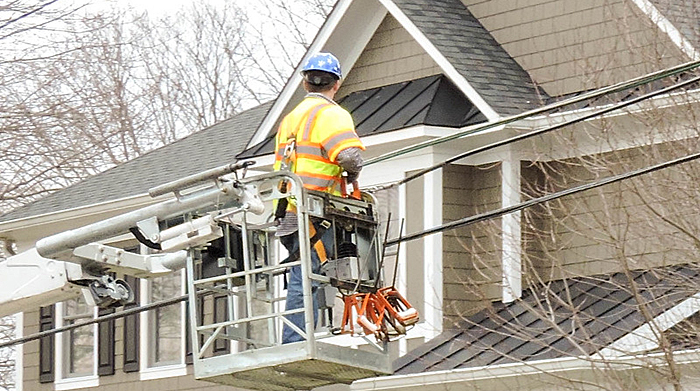Essential Tools for Utility Linemen

Image courtesy of Alan Kotok under Attribution 2.0 Generic License, resized to 700 x 391 pixels.
Utility linemen (AKA lineworkers, but I’ll use the term linemen generically in this post) have a tough job. They are expected to work in bad weather, at high altitudes, while navigating voltage and electrical arc hazards. It can be dangerous, physically grueling, and highly scrutinized. But, as with most jobs, having the right tools can go a long way toward making life just a little easier.
The Tools that Utility Linemen Should have in the Proverbial Toolbox
Before we get into specific tools, one thing I want to mention is that utility worker tools are not necessarily the same tools that electricians use. For example, an electrician generally needs pliers that can cut soft copper and aluminum, whereas utility linemen need tools that can cut steel-core aluminum-conductor reinforced cables. And that is just one of many examples.
So, with that disclaimer out of the way, what are the essential tools for utility linemen? Well, this list, which is all about lineman safety, would make a good starting point:
- Climbers (AKA leg irons, hooks, or spikes): One of the most essential tools is the angled metal devices workers affix to their legs to facilitate pole climbing. These devices are typically made of steel, aluminum or titanium. Steel spikes tend to be the most cost-effective but can be heavy. Aluminum is often cited as being more comfortable, but they are more expensive and don’t last as long as steel varieties. Titanium spikes are strong, lightweight and very durable, but are the most expensive of the three.
- Climber pads: These pads wrap around the calf to increase comfort and control when climbing. Varieties include soft wrap pads, wrap pads with inserts, and L-pads.
- Wood pole fall-protection (WFPP) devices: These are required by OSHA to provide fall protection to workers.
- Lineman’s belt (AKA work-positioning belts): These are support belts with 2-4 large D-rings that allow the worker to free their hands for work and provide fall protection benefits.
- Bolt bag (AKA ditty bag): As the name implies, these bags hold nuts and bolts and typically have loops that attach to the lineman’s belt.
- Tool holster: As the name implies, these holsters hold tools and come in 3, 4 or 5 tool varieties.
The bottom line is that all utility linemen need the right tools to make their job as safe and easy as possible, and these 6 tools represent an excellent starting point.



